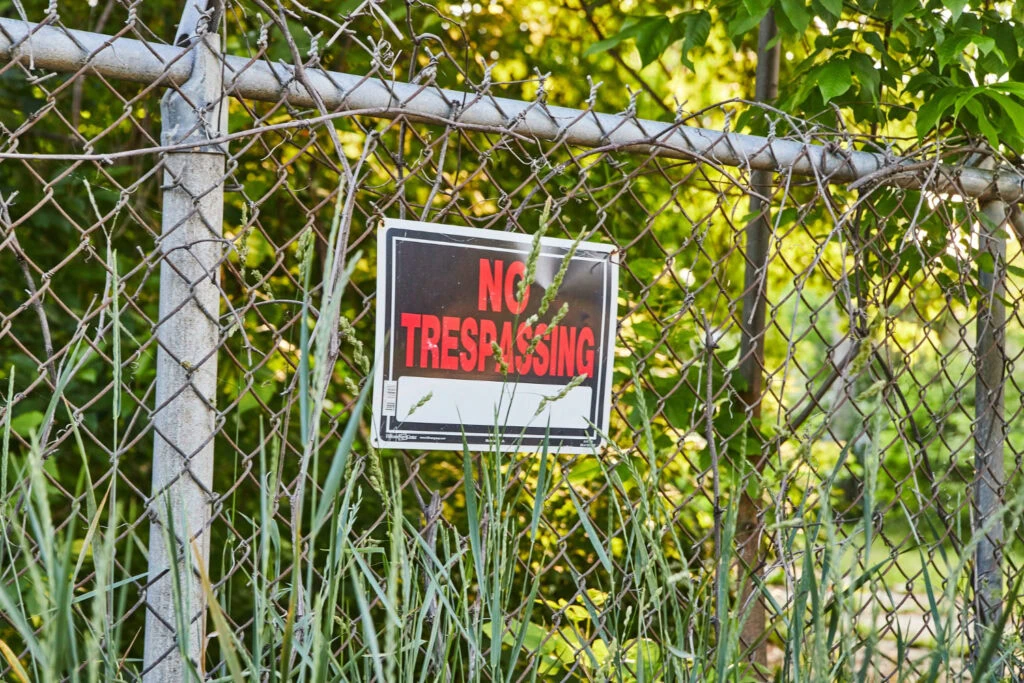“NO TRESPASSING” is a sign that most people have across at some point or another. It is a reminder that the law protects a person’s right to privacy. What you may not know is that the California Penal Code includes an extensive list of reasons a person can be trespassed. It is important to know what trespassing entails as well as the penalty.
This article reviews the definitions and explores the laws around trespassing.
What does it mean to trespass?
The California Penal Code Section 602 PC defines trespassing as “Entering and occupying real property or structures of any kind without the consent of the owner, the owner’s agent, or the person in lawful possession”.
The code includes a number of situations that fall under the category of trespassing. Types of trespassing include:
- Destroying a sign on a person’s property
- Entering a person’s private land
- Driving onto someone’s private property
- Refusing to vacate a motel room after not paying
- Refusing to leave a property or building
- Skiing on land that has been blocked off to the public
- Entering a birth center or maternal hospital without a lawful purpose
In sum, if the owner has the right to ask a person to leave their property, and if the person refuses, this is considered to be trespassing.
What is the penalty for trespassing?
The penalty depends on the type of trespassing. Some of the above-listed types of trespassing are penalized as follows:
In some cases, the penalty is a fine of up to $100.00. The court can require that the trespasser receive probation on the condition that the individual receives counseling.
A person who does not leave after being asked to leave by a peace officer can be fined up to $1,000.00 and/or up to a year in jail. For a subsequent offense, the penalty is a fine of up to $2,000.00 and/or up to a year in jail.
What is aggravated trespassing?
The California Penal Code Section 601 PC defines aggravated trespassing as the threat to another person’s safety, and within 30 days of making this threat, entering the property or building with the intention of following through with the threat.
The law requires that both aspects of the crime are met in order to be considered aggravated trespassing. A person has to reasonably fear that the trespasser will cause physical harm.
An example is a disgruntled ex-employee walking onto the premises of his previous place of employment after previously threatening to beat up the secretary. In this example, even if the ex-employee does not beat up the secretary after entering the building, the ex-employee can still be charged with aggravated trespassing.
What is the penalty for aggravated trespassing?
The penalty for aggravated trespassing is up to a year in jail and/or a fine of up to $2,000.00.
What are some legal defenses for trespassing charges?
There are a few instances where a person who is charged with trespassing can make the case that they were not intending to trespass.
- If a person enters someone’s private property without knowledge that the property is privately owned, one can claim that the lack of signage or fencing made it impossible for the trespasser to know that it was private property.
- If a person has the express permission of the owner of the property to enter the owner’s property, then the person is not trespassing.










